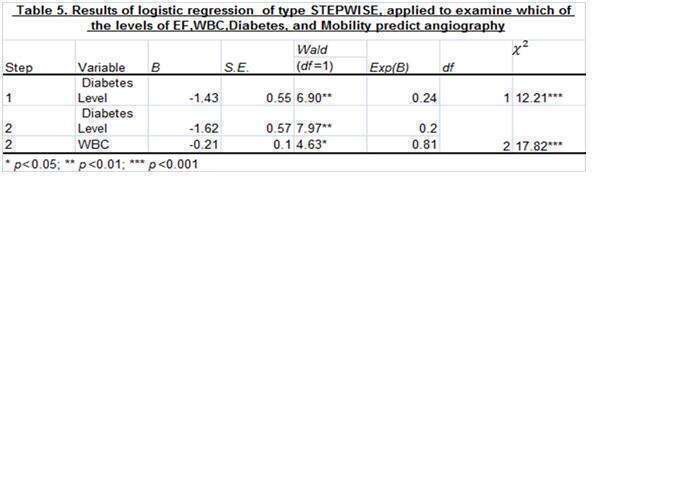Background: Percutaneous Coronary Intervention (PCI) is a mainstay in the management of acute coronary syndrome. The bulk of clinical evidence and experience underlying this fact relies on middle-age patients. In fact, very few data of very limited quality are available in the subgroup of nonagenarians
Objective: Analyzing data in order to find predictors for Percutaneous Coronary artery Intervention in a specific population of nonagenarians
Methods: Retrospective analysis (n=57) patients admitted to our facility with ACS at the age >90 during 2009-2013 A hierarchic logistic regression of type STEPWISE was applied.
DM classified 1- diet treated, 2-oral hypoglycemic, 3- Insulin treated
Results: Four variables were found statistically related as predictors of CATH/PCI: EF, WBC, DM, and ADL. Evidently, the more advanced DM, the higher the tendency for an invasive approach becomes. Additionally, the higher WBC level is, the lower susceptible for an intervention.
Conclusion: The elderly are the fastest growing population in the western world and the decision whether to choose an invasive treatment over a conservative approach in the setting of ACS is often based on data regarding much younger population.
Our study revealed that the higher WBC level is, the greater the tendency to avoid an invasive approach becomes. Alternatively, an invasive approach is preferred in patients with advanced diabetes.

